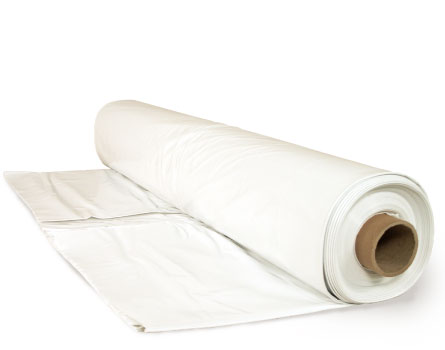
The post was simply labeled “Martin Holladay” — for the GreenBuildingAdvisor senior editor — but the question from architect Stephen Thompson went to the heart of one of the most contentious building questions in recent history: is a polyethylene vapor barrier a good idea?
Thompson tells Holladay he’s read much of what Holladay has had to say about vapor barriers, but he still is puzzled by several comments.
“You believe that polyethylene film is not to be used as a vapor barrier,” Thompson says in his Q&A post. “I could not disagree more; after 10 years of work in Minnesota, I’ve seen what can happen when VBs are left out. All of the expert seminars at the AIA Convention insist that VBs are essential in cold climates. After viewing their photos of buildings turned icicle, I must agree.”
Thompson makes two other points: that some GBA readers have implied an exterior vapor barrier is correct, when in fact that only makes sense in the deep South, and that some readers have referred to Tyvek, the house wrap made by DuPont, as a vapor or air barrer, which is not correct.
Although the practice is not required by code, some builders in cold climates continue to install a poly vapor barrier over the studs before the wall is covered with drywall. The poly is supposed to stop the migration of water vapor into wall cavities during the winter, where it would condense and cause problems such as mold or decay.
But as building scientists learned more about the movement of air and moisture through walls and roofs, the practice was discouraged in all but the most extreme climates. Thompson’s question, especially because it comes from a building professional, revives this old debate…
Weekly Newsletter
Get building science and energy efficiency advice, plus special offers, in your inbox.

This article is only available to GBA Prime Members
Sign up for a free trial and get instant access to this article as well as GBA’s complete library of premium articles and construction details.
Start Free TrialAlready a member? Log in





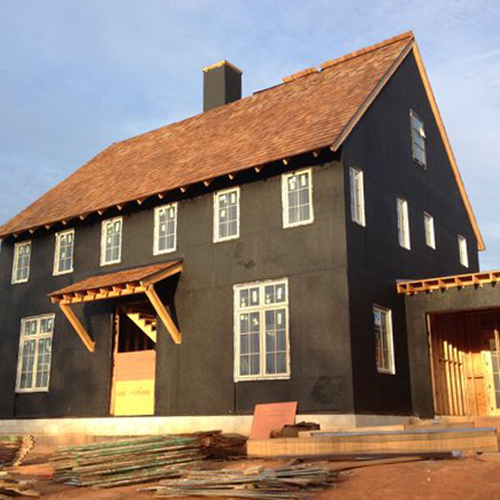
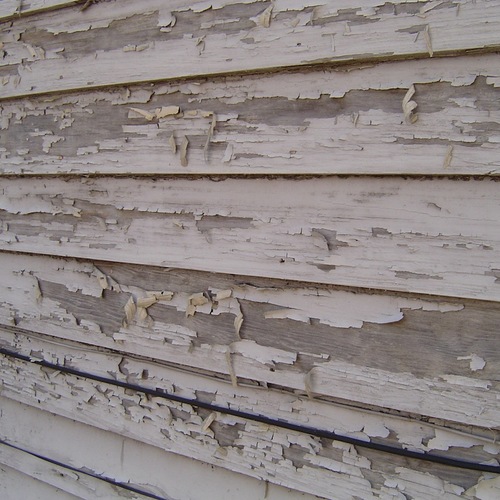
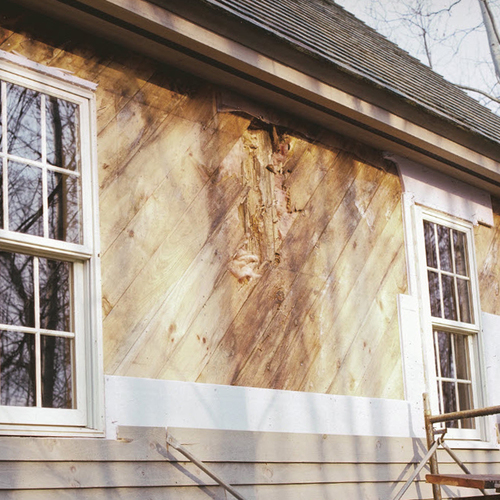
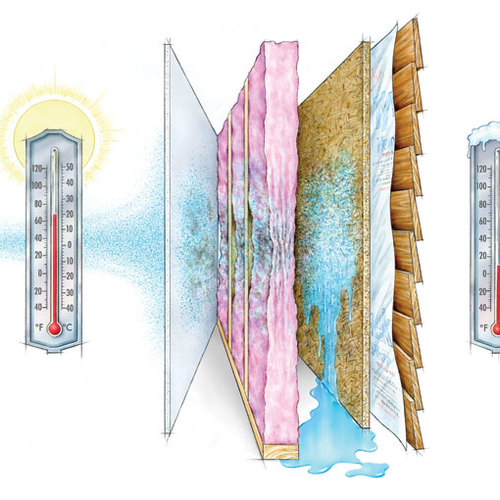






25 Comments
One size fits all
Poly vapor barriers work fine in Minnesota, they have been used for more than 30 years, foil backed drywall was used in the late 1960's. I have never opened up a wall in MN that had moisture damage that was not related to improper flashing details. Bulk water intrusion will not be nullified by ADA, there will still be a problem.
This is a great study in my opinion and will give some historical perspective on residential buildings in MN.
http://www.state.mn.us/mn/externalDocs/Commerce/New_Home_Performance_Study_111202034608_FinalMNhomes.pdf
As for air leaks in the poly causing moisture problems, on the job experience does not bear this out. Most of the early poly vapor barriers in MN were just stapled to the studs and lapped at the seams, electrical boxes were of the standard type and not sealed in any way. There is evidence of air filtering in the insulation around electrical openings and bypasses in the poly but I have never found moisture accumulation . Cold climate walls that dry to the exterior work fine and have done so for decades.
Poly in Ann Arbor, MI
We have a 23 year old 2x6 walled passive solar home, we designed and built ourselves with 6mil poly on the inside. We installed our own insulation and poly. I have cut holes in the walls for various reasons over the last few years, (adding vents, outside lights...), and have never found any problems with the inside of wall that I can tell. Looks like the day I installed it. We have a very tight house with fresh air ventilator and try to keep the humidity below 40% but 50% is common. Nice not to have it to dry in the winter, as is the case with most people, but it can also be to wet if we're not careful.
Seems to work for us. Very low infiltration (no cold drafts), no wet insulation and very low heating bills. It does need to be done right but then again a lot of construction needs to be watched and checked as you progress.
No questions that mold issues are very important and do need to be addressed in this new phase of home design and building. A whole subdivision in metro Detroit was abandoned and people injured because of black mold in the un-vented attics shortly after the homes were built.
Working?
Doug and Vincent,
I'm going out on a limb here (not really) but I would say the poly vapor barrier installed in these walls is NOT "working."
Somewhat tight construction, reasonable indoor humidity levels, and drying potential to the exterior are the things keeping your walls dry. It aint the poly.
Brett, What is your proof?
The point I am making is a poly vapor barrier works in MN and has worked for many years. The idea that ADA is the best and only way to build is just not true, especially in a cold climate. That circus came to town about 10 years ago and nobody went.
Building science is "the circus"?
Doug if you want to build a less forgiving wall assembly that's fine, but you can't argue with physics.
If you think diffusion is the source of moisture in walls, you are wrong. If you think an imperfect poly vapor barrier with gaps, holes and unsealed seams "stapled to studs" is a better then the Airtight Drywall Approach, you are wrong. If you think building scientists advocate poly over ADA, you are wrong.
"One of the problems in the building industry is that we have a spreading "cult-like" mentality that worships at the "church of polyethylene". This cult views the answer to all moisture problems as the installation of a polyethylene vapor barrier condom on the inside of buildings. This cult is responsible for many more building failures than building successes. It's time that the cult deprogramming started." -Joe Lstiburek, Ph.D., P.Eng.,
Builders choice
MN code calls for a continuous air barrier, can be drywall or sealed polyethylene. Virtually every new home in the Twin Cities has warm side poly and we have many of the largest US home builders here. They have a choice, they use polyethylene and so do I.
rubber rain suit
If I were forced to wear one jacket all year round, 24 hours a day, what would it be? A rubber rain suit or perhaps a "waterproof-breathable" jacket? Having worked for many years in the outdoor equipment industry, I know what my answer would be - for my climate.
I only ask this because it seems to me that more and more building science is veering away from advocating the rubber rain suit, one-sized-fits-all mentality, which feels like the right direction to me.
Sure rubber keeps the rain out, but I may spend much more energy trying to keep from over heating or over humidifying than it's worth, not to mention what happens when I lift my sleeve in a rainstorm, and a pint of water pours into my jacket. Too bad we can't design a house with a removable coat, too... :)
A new approach possible
I realize that poly is the norm for sheeting in this application, but there are new products now on the market that offer new approaches.
Here on the West Coast for this application you can add the SIGA Majpell to the mix. Rather than vapor closed, or a zero perm, it's 0.68 US perms. In the application it's intended to be just diffusion open enough to let the wall system dry to the interior while it performs it's air-sealing task. Regardless of the "why/when walls dry to the interior", which can be so specific to a particular situation or project, having the opportunity to perform the air sealing and limiting vapor movement without completely blocking it is the goal of the product.
As pointed out earlier, having this or any membrane punctured by countless staples is obviously counter productive, so the recommended application method is hanging it with SIGA Twinet, a double stick tape made for wall construction. Of course it can still be stapled, but to maintain the quality level, the punctures need to be taped over with, (you guessed it) yet another SIGA tape: Sicrall 60 which is made for the SIGA membranes. The Sicral also serves to tape the joint overlaps etc.
This approach is intended for a heating climate and a wall design that accommodates the other needs of managing liquid water & air at the exterior, and interior layers. If the building designer wants the air and vapor issues handled at the interior layer by membrane, then this is (in my opinion) an improved approach to the "all or nothing" scenario offered by poly. In SIGA language, this application is known as a "Vapor Control Layer".
To maintain a below 1ach50, a service cavity approach is recommended rather than dry wall applied by yet more fasteners over a perfectly good air-sealed layer, but that's an independent subject to the vapor discussion. :)
For a more detailed look, you can see: http://www.smallplanetworkshop.com, or perhaps more technical: http://www.siga.ch and search for majpell.
Canadian content
The issue of a vapour barrier seems to be more of a concern down south than it does here in Canada. I live in the great white north and I've been interested in the debate because I hope to build an over insulated air tight house in the next few years. As the gentleman from Minnesota pointed out, a poly vapour barrier as been a standard for at least 40 years. I have owned a few older homes and done some renos to them. Moisture damage within the walls or mould hasn't been an issue. That said I recognize that many of the older homes here aren't air tight and don't always have external house wrap on them beyond some tar paper perforated with nail holes and numerous tears resulting from construction or renovations.
Many of the newer homes with the Tyvek wraps and super insulation haven't been around long enough to draw any conclusions from, as there's no need to start tearing out walls or replace windows or doors on new homes that would give rise to see what has actually taken place within the structure. This creates a certain amount of doubt in my mind as to what the future holds. Will the new construction practises which condone tighter air space and restricted infiltration from external sources create unanticipated moisture problems?
Right now I see a lot of speculation and theory that vapour barriers are bad, but not a lot of proven evidence in terms of actual construction failures here in Canada. Can any of the "experts" point to actual insurance claims or law suits that substantiate the theory they are proposing?
I'd like to avoid a headache before I create one by following the standards of installing an interior vapour barrier over the insulation and under the drywall we've adopted here in Canada for years, but I'm a kind of show me the proof kind of guy. The theory sounds good but where's the hard evidence I can review?
Vapor barriers
I should be over this by now, but it is truly shocking and disappointing to continue to hear the confusion over ploy vapor barriers operate at the same level of confusion as 20 years ago when I started work in this area.
Peter Yost has done a great job of trying to summarize the bigger issues, but the commentary seems to ignore his sage information.
First, the question that started this all: clearly the question is based on a confusion between vapor barriers and air barriers. Vapor barriers are intended to control vapor diffusion. Air barriers are intended to control air leakage. Poly can be used as an air barrier, but it provides a vapor barrier when you do it. Experience that installing poly results in better airtightness shows the efficacy of poly as an air barrier, but does nothing to show the influence of a vapor barrier.
Second, there is lots of evidence of moisture problems beyond "theory" to answer Mr Fandrich's quest. This information is in ASHRAE conference proceedings, Canadian building science conferences, etc. Written down, peer reviewed and published for many years. Ironically for Canadians, the first technical reference I can find of inward vapor drives trapped by poly causing rotting walls in cold climates, is from the Division of Build Research, dating to the early 1960's. At the University of Waterloo we were measuring and photographing test wall rotting starting in the early 1990s (I attach the photo of a brick veneer wall in Waterloo Canada: brick, Tyvek, fiberglass poly). At about this time the Swedes were also publishing results of rotting walls and mold due to warm weather condensation in their cold climate. Of course, as forensic consultants, Building Science Corporation also get to see the effects in real buildings in the field all the time. And this includes Minneapolis for sure.
A major change in the last 20 years is the proliferation of air conditioning in cold climates. This is almost a prerequsite for moisture problems to occur due to poly. And AC is common in Minneapolis, Buffalo, Toronto, Ottawa, etc.
So poly can and does cause real and serious problems in theory and practise, in cold climate buildings when certain things align: a moisture storing cladding like wood stucco fibercement and brick, that is poorly ventilated, an air conditioned interior, a vapor permeable wall assembly with a low-permeance vapor barrier on the inside.
The colder and drier the climate the less of a problem poly is. But practical experience shows problems up to and including 8000 HDD F.
Thank You
Thank You John Straube for taking time to post comments here.
I also noticed that you posted a relevant new Research Report yesterday.
http://www.buildingscience.com/documents/reports/rr-1101-influence-low-permeance-vapor-barriers-roof-wall-performance/view
still confused...
I am confused by this statement by Peter Yost
""If the choice is made to have an interior layer of polyethylene sheeting serve as the air barrier and the vapor retarder for inward moisture drive during the winter in a really cold climate — 9,000 heating degree days or more — be sure of three things:""
Isn't the vapor drive primarily "outward" in a very cold climate in winter?? The RH may be higher outdoors but the absolute humidity is much lower.
Response to Garth Sproule
Garth,
Good catch -- you're right, of course. I have changed "inward" to "outward" in the text.
Vapor Barrier
Vapor Drive is always in the direction from high to low. What is the insulation and wall/ceiling material? Personally I don't like wood or fiberglass because this type of construction doesn't work efficiently, but back on point. Is it affected (performance or mold) by moisture? Most homes have way too much air passing through uncontrolled due to lack of builder education and attention to detail. If your primary climate (other than when it is raining) has a moisture drive that is from inside to outside, then the a sealed vapor barrier (not poly) logically may be installed on the inside if the insulation or building material is damaged by that vapor. But before you go there, give yourself a continuous airtight thermal break with foam insulation. Not having a thermal break between the poorly insulated framing is your real problem. No rocket science here, but If moisture affects your materials and performance, and it is not cost effective for you to build acceptable performance into the assembly, then change the materials to something better.
Response to John Palecek
John,
I disagree with a few of your points. You wrote that in some circumstances, "a sealed vapor barrier (not poly) logically may be installed on the inside." I think you mean vapor retarder, not vapor barrier. And vapor retarders don't need to be "sealed." Rather, air barriers need to be sealed.
Also, I'm not sure I understand what you mean when you write, "Not having a thermal break between the poorly insulated framing is your real problem." Where do you propose having a thermal break? Between the framing and the what? Perhaps you mean, "between the framing and the siding." If that's what you mean, then your suggestion is a good one.
General Comment On the Futility of Debate
I have worked as a structural engineer in the design/construction industry for the last 10 years. As someone who is usually beside the architect at the table and who spends the most time with the contractor on-site, I would like to offer a lateral view and bottom-up comment that all of you may wish to consider.
My experience has shown that builders typically stand by the techniques or processes they've been using for years. Usually, this is because the building code, a professional they trust, or trial and error have shown them that it is the way to do it. The builders will fight tooth and nail to maintain that technique because they make money through repetition. Case in point, I have sat across from a builder trying to explain a black and white change in the code only to have him scoff at me as if I was the reason he was going to make a fraction less on formwork construction. So, the instigators of this debate should try to understand that it will be very difficult to change the view of a builder who has 20 years experience with walls and who sees little evidence of a problem, that it will be unlikely that he will (or even should) take it upon himself to change his technique.
This begs the question “Does his mind need to be changed?”
There is only one thing that brings a change in construction technique to the masses: THE CODE. Engineers, architects, and builders alike are bound by the rules of building codes and their enforcers: the building officials. This fact fundamentally changes the debate because the onus is no longer on the designer or builder, but on the groups governing the industry. It seems like the parents are beating up the kids in the school yard because the teachers won’t discipline them in the classroom.
Thermal Breaks
We use EPS foam and Viper vapor barrier on top of the foam below slabs. In this case we don't care if the insulation is affected by moisture, but we do not want the moisture in the building because it takes more energy to heat , cool, and dehumidify the building. Looking at conventional stick frame walls and ceilings, why would I want high indoor vapor to pass through insulation that I know it may destroy, not only performance, but useful life, when I can ventilate it and recover some of the latent energy from the vapor? Respectfully, John
More comments on code.
A few more comments to consider regarding code:
1. These days there aren’t a lot of code changes that happen based strictly on field experience, I would say they are usually research driven. Which is why the “don’t fix it if it ain’t broke” construction industry have a hard time believing in the changes and why there’s always a lot of grassroots resistance to code change. So does every builder doesn’t need to be convinced of a new approach? I don’t think so.
2. A forward thinking architect that might want to force a change will be met with resistance on all fronts. A project with a major change such as this would require open-mindedness at every level. Especially by an owner because a design with out a VB would be viewed as an experiment. If the science backs this change should an architect need to waste energy fighting this point. I don’t think so.
3. Finally and most importantly, much of what I”ve read on this debate revolves around residential construction, where there is almost never an architect, engineer, or building scientist anywhere near the project. Does code need to change before we see a move on this? I think so.
Response to John Palecek
John,
You wrote, "Looking at conventional stick frame walls and ceilings, why would I want high indoor vapor to pass through insulation that I know it may destroy, not only performance, but useful life, when I can ventilate it and recover some of the latent energy from the vapor?"
I'm not sure what you mean by "ventilate it" -- what is "it"? The interior of the home? Something else?
No one advocates that a builder create a wall assembly that encourages vapor to pass from the interior into the wall assembly. The fact of the matter is, most moisture moving from the interior into the wall assembly happens because of air leaks. If you plug up the air leaks in your wall, you have stopped 95% of the moisture transmission. Vapor diffusion (and vapor barriers) are beside the point.
The Code, is not your answer, unless you want all costs higher.
I live in one of the largest counties in this country and we do not have building codes. New construction in this area is for the most part built to code, by safety standards anyway. We also have some of the highest quality and most energy efficient buildings in the nation. Remember code is bare minimum standard, and primarily safety oriented, and typically that is what most inspectors understand or even look for. Just because it is code (not Law) doesn't make it right. I challenge you to find just one government program that works financially, and then tell me why the majority has been wrong since the beginning of time, and why we should trust them to inspect our buildings to their standards. Been doing it that way since ... we all know the story. Some of us make our living because people keep doing what they do. Thus developing codes and licensed contractors was to solve all the problems, right? Most of the rest of the nation has this. Did it solve anything? Most homes can be a minimum of 2x more energy efficient at no additional cost. I am all for residential fire sprinklers because they work, but if you make it mandatory, even I would fight it. They do it for our own good, right? In America the Castle Doctrine should stand beyond mere words.
air barrier
Does it matter where the air barrier is? Is the ada better than sealing the exterior of the building?
Response to Marc Bombois
Marc,
Either an exterior or an interior air barrier can work. To learn more, see Questions and Answers About Air Barriers.
Code is our only answere (up here)....
I guess I'm a little uneducated when it comes to building regulations in the states, I'm all for pushing for better "industry standard" rather than law.
Up here in Canada, especially in my region, the building code is it. Yes, it is a minimum standard, but in my experience that is where we need the most attention. The laws that keep even the slimiest builder in check.
Further to the comment that building codes are the minimum standard, an inspector that is familiar with the code will tell you that removing the VB from the inside face is not meeting the minimum standard.
confused about batt insulation
if someone knows where the answer is please post it
I see batts by corning that have r values of 19 20 21 and 22 all appear to be 5.5 thick the 6 inch is actually less r value
is this canadian packages vs us or is there a real difference
Response to Robert Tindall
Robert,
There are two reasons that the R-value on the packages varies:
1. It's possible to manufacture fiberglass batts at different densities. High-density batts have a higher R-value per inch than low-density batts. That is why it is possible for two brands of fiberglass batts with the same labeled thickness to have different R-values. The labels are correct -- the batts with a higher R-value per inch will perform better.
2. Most 6-inch batts sold in North America are labeled (and tested) at 6-inch thickness. (Years ago, they were used for attics. Imagine that!) When a 6-inch batt is installed in a 5.5-inch stud space, the total R-value of the batt decreases, but the R-value per inch increases. These labels are somewhat misleading if the batts are routinely used in 2x6 walls, but the labels are still a useful way to compare different brands. The higher the R-value, the better.
It's possible that some manufacturers have begun labeling their batts with a rating for 5.5 inches, while competitors are still labeling their batts with a rating for 6 inches. That makes comparisons complicated, of course.
Log in or become a member to post a comment.
Sign up Log in